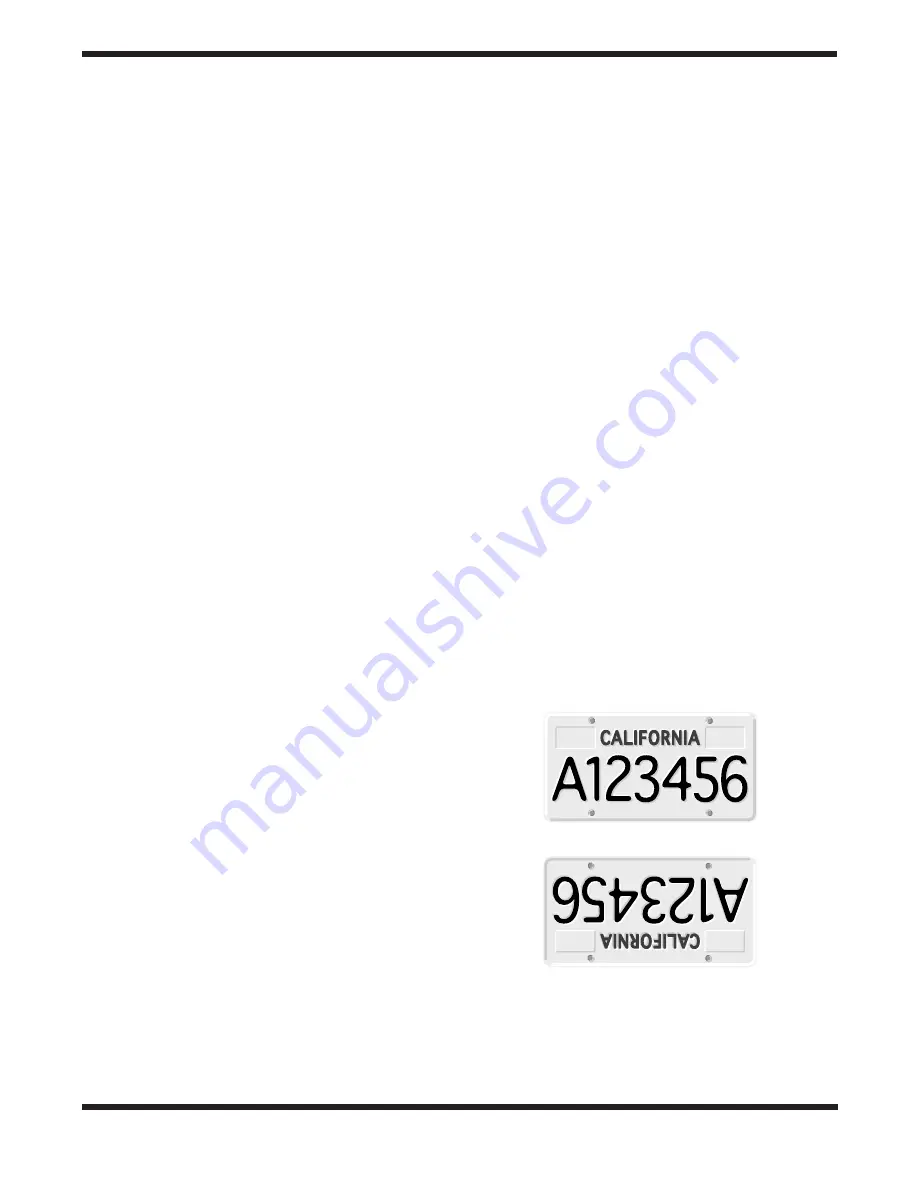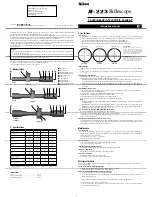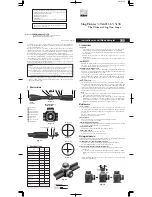
5
9. Loosen and remove the two finder scope bracket securing
thumbnuts from the optical tube assembly. Place the holes
on the bottom of the finder scope bracket over the two
threaded shafts coming out of the optical tube. Replace
the thumbnuts to secure the finder scope bracket to the
optical tube. The finder scope and finder scope bracket
should be oriented as they appear in Figure 1.
10. Insert the 25mm Explorer II eyepiece into the focuser
drawtube and secure it in place with the thumbscrew.
Your telescope is now fully assembled and should appear as
it does in Figure 1. Keep the dust cover on until you are ready
to observe.
4. Getting Started
Altitude and Azimuth
The SpaceProbe 3 Altaz permits motion along two axis: alti-
tude (up/down) and azimuth (left/right) as shown in Figure 3.
This is very convenient, since up/down and left/right are the
most “natural” ways that people aim. As a result, pointing the
telescope is easy.
To move the telescope in the azimuth direction, loosen the
azimuth lock knob, take hold of the telescope by the end of the
optical tube, and gently rotate the telescope to the desired
position. Then re-tighten the azimuth lock knob. To move the
telescope in the altitude direction, loosen the altitude lock
knob, take hold of the end of the optical tube and move the
tube up or down to the desired position. Then re-tighten the
altitude lock knob. If the telescope moves too freely in the in
the altitude direction, then tighten the yoke knobs.
Note about the Altitude Micro-Motion Rod
and Thumbwheel
Since making fine-adjustments to the altitude of the telescope
can be difficult, the SpaceProbe 3 Altaz comes with an altitude
micro-motion rod and thumbwheel. By turning the thumbwheel,
the telescope will move slightly either up or down, depending
on which direction you turn the thumbwheel. You do not loosen
the altitude lock knob to make adjustments with the thumb-
wheel. There is a limit to how far the thumbwheel can turn in
either direction, so if you need to make any large altitude
adjustments to the telescope it is best to simply loosen the alti-
tude lock knob and move the scope by hand.
Focusing the Telescope
Insert the 25mm Explorer II eyepiece into the focuser and
secure it with the thumbscrew. Move the telescope so the front
(open) end is pointing in the general direction of an object at
least 1/4-mile away. Now with your fingers, slowly rotate one
of the focusing knobs until the object comes into sharp focus.
Go a little bit beyond sharp focus until the image starts to blur
again, then reverse the rotation of the knob, just to make sure
you’ve hit the exact focus point.
Do You Wear Eyeglasses?
If you wear eyeglasses, you may be able to keep them on
while you observe. In order to do this, your eyepiece must
have enough “eye relief” to allow you to see the entire field of
view with glasses on. You can try this by looking through the
eyepiece first with your glasses on and then with them off, and
see if the glasses restrict the view to only a portion of the full
field. If the glasses do restrict the field of view, you may be
able to observe with your glasses off by just refocusing the tel-
escope the needed amount.
If your eyes are astigmatic, images will probably appear the
best with glasses on. This is because a telescope’s focuser can
accommodate for nearsightedness or farsightedness, but not
astigmatism. If you have to wear your glasses while observing
and cannot see the entire field of view, you may want to pur-
chase additional eyepieces that have longer eye relief.
Aligning the Finder Scope
The finder scope must be aligned accurately with the tele-
scope for proper use. To align it, aim the main telescope in the
general direction of an object at least 1/4-mile away, such as
the top of a telephone pole, a chimney, etc. Now, look in the
finder scope. Is the object visible? Ideally, it will be somewhere
in the finder’s field of view. If it is not, some coarse adjust-
ments of the three black nylon finder scope alignment
thumbscrews will be needed to get the finder scope roughly
parallel to the main tube. If this does not work, loosen the two
thumbnuts that secure the finder scope bracket to the optical
tube and slide the bracket left or right to get the object in the
finder’s field of view. Retighten the thumbnuts.
Note: The image in both the finder scope and the main
telescope will appear upside-down (rotated 180°). This is
normal for finderscopes and reflector telescopes (see Figure 4).
By loosening one alignment thumbscrew and tightening the oth-
ers, you change the line of sight of the finder scope. Use the
three alignment thumbscrews to center the object on the
Naked-eye view
View through finder scope and telescope
Figure 4. The view through any standard finder
scope and reflector telescope is upside down.
This is true for the SpaceProbe 3 and its finder
scope as well.






























